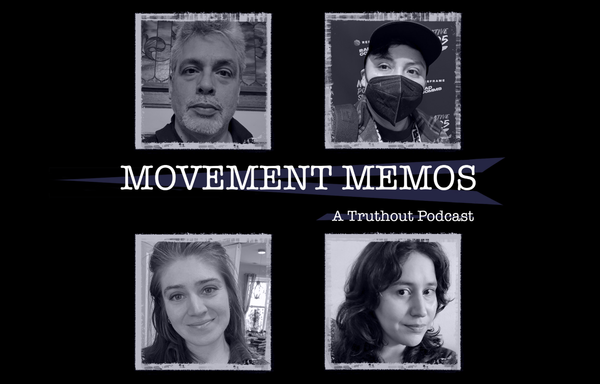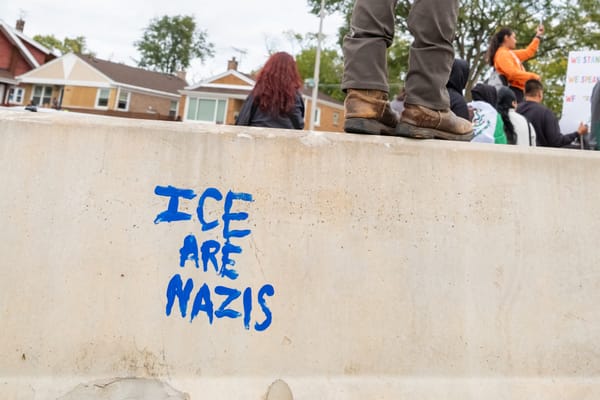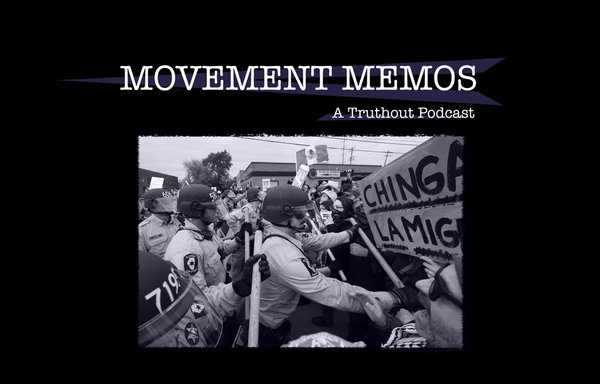Mapping Community Defense and Care in Our Neighborhoods
This worksheet can help us prepare for Trump's military interventions at the neighborhood level.


On Thursday night, about 60 activists and organizers gathered in Chicago to discuss Trump's threatened military occupation of the city. It was one of many such conversations that have played out this week, and will continue as our communities prepare for another grandstanding show of force from this fascist administration. This gathering centered around a tool that some friends and I worked on this week. The worksheet featured below—"Mapping Community Defense and Care in Our Neighborhoods”—includes content adapted from Interrupting Criminalization’s Mapping Community Ecosystems of Collective Care toolkit, and incorporates lessons and ideas from activists and organizers from around the country, including folks in L.A. and D.C., where organizers are already navigating Trump's militant escalations.
This worksheet is not a rulebook, but rather a set of questions that can help us orient ourselves and operationalize acts of care and protection. It is meant to help us prepare for Trump's military interventions—and other ongoing threats—at the neighborhood level.
We had some great conversations about this tool last night, and I know some groups are already planning meetings to map out their worksheet answers soon. In addition to discussing the worksheet, we also heard valuable insights from community members. After some crucial updates from L.A. and D.C., a veteran-turned-counter-recruiter offered advice about interacting with the National Guard. An organizer with Organized Communities Against Deportations (OCAD) explained how to get involved with OCAD's rapid response work. We also heard from a youth organizer with the Chicago Freedom School about what young Black and brown people in Chicago are up against right now, and discussed a mutual aid project grounded in Black and migrant solidarity. We heard updates about city and state responses to Trump's authoritarian maneuvers, chanted together, and broke into small groups to discuss some of the subjects at hand.
I deeply appreciate the insights and advice our speakers brought to the conversation, because it’s crucial for us to engage with already-organized people, and people who hold key knowledge in our communities, whenever possible, when making our maps and plans.
If you live in Chicago, or another city that Trump is threatening to occupy—like Baltimore or New York City—I hope you will find this worksheet useful. You can find a printable copy of the worksheet in English and Spanish here.
***
Mapping Community Defense and Care in Our Neighborhoods
Why this matters:
Trump’s Pentagon is drafting plans for a military invasion of Chicago. The people most at risk—unhoused people, trans folks, Black and brown people, disabled people, and immigrants—need more than our fear and indignation. They need robust networks of care and defense in every corner of our beloved city.
This worksheet is a tool to help you and your people map existing resources and relationships in your area, identify gaps, and determine how we can reinforce the lines of care and defense our communities need.
Step 1: Who’s Already Here?
Make a list of groups, hubs, and resources in your neighborhood. Don’t just think of nonprofits—include churches, mosques, barber shops, clinics, cultural centers, block clubs, food pantries, and informal networks. Note what each group or hub does, who they serve, and how they operate.
Group/Hub Questions:
- What do they do?
- Where and when do they do it?
- To whom are these services accessible?
- Do they involve police/ICE/DCFS?
- What are their safety and values practices?
Step 2: What Relationships Already Exist?
Draw a quick map. Put yourself or your group in the middle. Around you, add the groups you listed above. Connect them with lines:

Solid line = strong, trusted relationship
Dotted line = loose or potential relationship
Arrow = one-way flow of resources or referrals
Ask each other:
- Who trusts who?
- Who already works together?
- Who could be connected with some work?
- What conflicts or one-sided beefs can be put aside right now?
- Where can minor or old fractures be healed with a conversation?
Step 3: What Do We Value in Our Defense Work?
What values are important to you and your group? Examples:
- No police, no ICE.
- Ensuring trans and disabled people’s safety includes keeping our people out of all carceral spaces—from jails and detention centers to psychiatric facilities where they may be involuntarily committed.
- Practicing accountability without punishment.
- Sharing resources without strings.
Ask each other: How will we hold ourselves to these values? How will we give and receive feedback? How will we make decisions together in stressful circumstances? As we do our defense work, are there times when we may diverge from our normal decision-making process? If so, discuss those conditions and what alternative decision-making pathways folks will be comfortable with.
Step 4: What Spaces Do We Need to Protect?
Identify spaces in your neighborhood that need added protection, such as vulnerable blocks, gathering spaces for day laborers/sex workers, encampments, and critical public transit hubs.
Ask each other:
- Where might an occupying force focus its repression and violence?
- What safety measures already exist for these spaces?
- How can we help protect and support people who live, work, and travel in these areas?
- Can your crew “adopt a block”—organizing to alert neighbors about ICE or police activity, meet the needs of those who can’t leave home, and respond to local safety concerns as they arise?
Step 5: Where Are the Gaps?
Look at your map and ask:
- Who’s missing?
- Which vulnerable folks in your area don’t have strong lines of care or defense?
- Who in our community has lived through militarized regimes or war zones, and may have experience to share? How can we support and learn from them?
- Where are people already stretched thin or burned out?
- What kinds of support are least available? (Consider: food, housing, medical, legal/court support, interpretation, healing, and ways to locate disappeared folks.)
Step 6: What Are Our Next Moves?
Think about strategy:
- Rapid response: Who can we call when there’s a raid, a sweep, or violence?
- Information sharing: How can we create or utilize an already-existing hub for people to send videos and other documentation of federal escalations and attacks?
- Impacting troop morale: How might we affect the attitudes of troops being mobilized in Chicago and potentially demoralize and/or counter-recruit them?
- Care hubs: Where can people go for food, shelter, or care in a crisis?
- Communication: What’s our plan for staying connected if phone or internet access is lost? If checkpoints are set up, how will we alert people and guide them to safer routes?
- Roles: Who is doing what? Do we rotate certain roles? What do we do when a role needs to change? Do we need to set agreements with other groups?
Step 7: Plan for conflict transformation
Ask each other:
- What will we do when we find ourselves in new conflicts with one another? What will we not do?
- What tools will ground us in our internal conflict transformation? (Examples: The In It Together Toolkit and/or Turning Towards Each Other: a Conflict Workbook)
- Who can we reach out to for support in navigating conflict if we are not able to resolve it internally?
Step 8: Keep It Alive
Just as conditions on the ground will continue to change, your answers to the above questions will likely change with time as well. Make a plan to revisit this worksheet.
Ask each other:
- When will we check in and update? (Monthly? Quarterly?)
- How will we bring in new people and orient them?
- How will we fortify ourselves and each other? (Weekly sing-alongs? Dance parties? Support groups?)
- How do we pace ourselves so we don’t burn out?
Remember: Building this kind of map isn’t about doing everything at once. It’s about clarity, connection, and care. It’s about making sure that when we stumble—or when we’re under attack—good people have our backs.
Organizing My Thoughts is a reader-supported newsletter. If you appreciate my work, please consider becoming a free or paid subscriber today. There are no paywalls for the essays, reports, interviews, and excerpts published here. However, I could not do this work without the support of readers like you, so if you are able to contribute financially, I would greatly appreciate your help.




